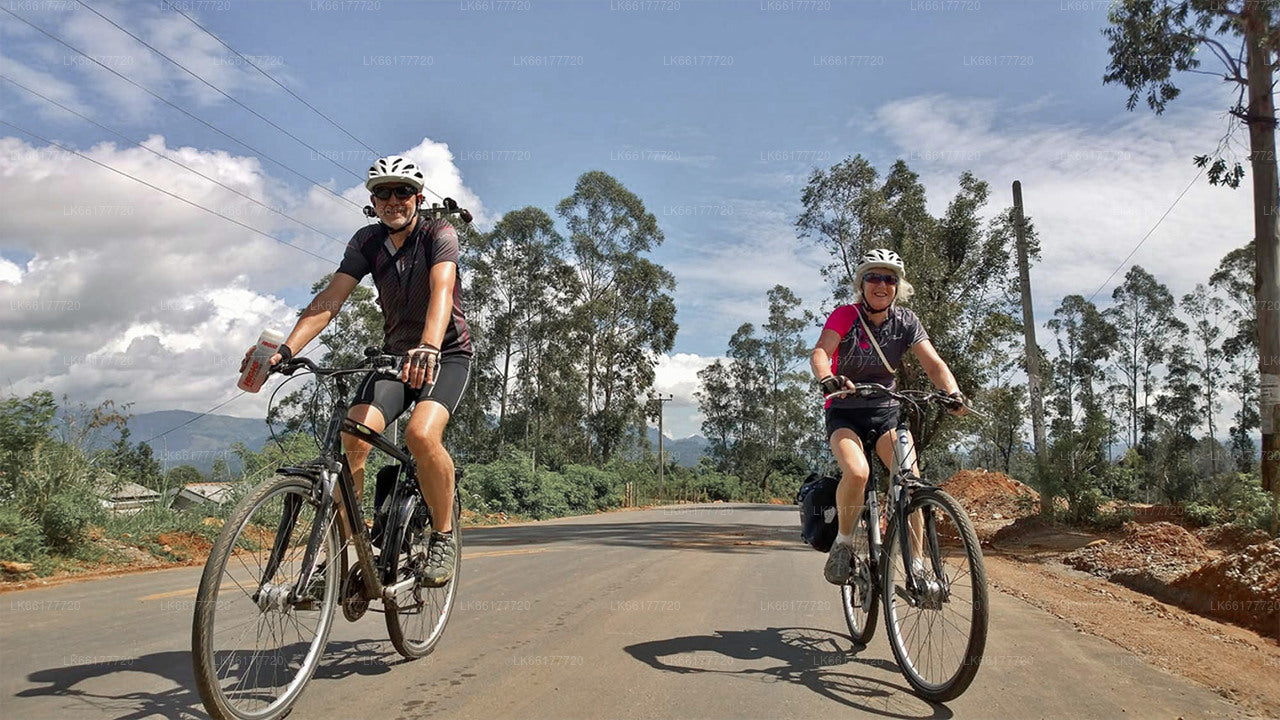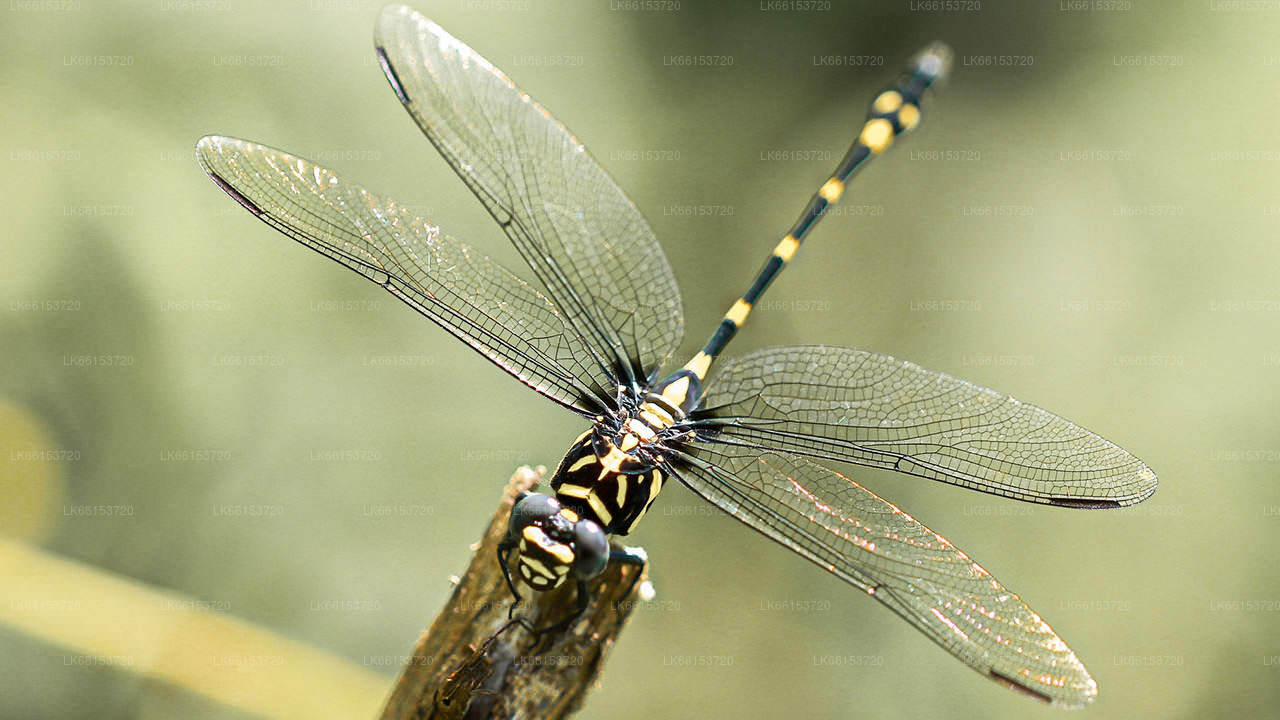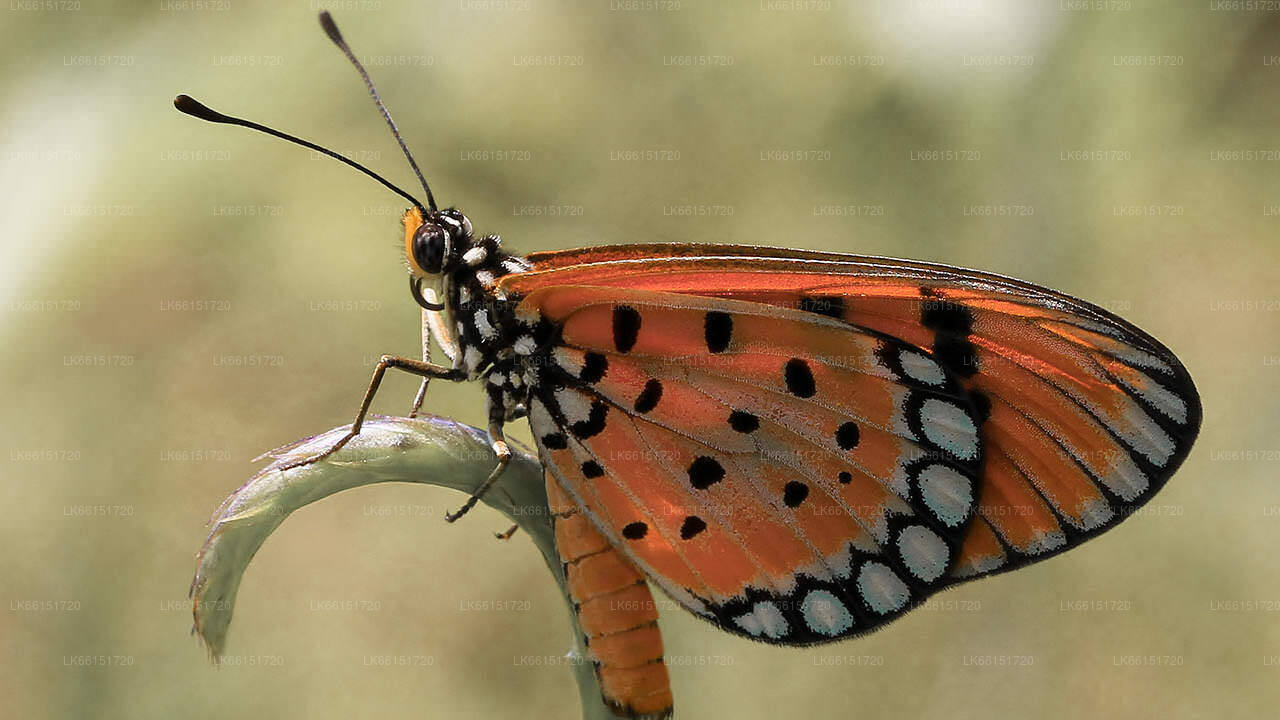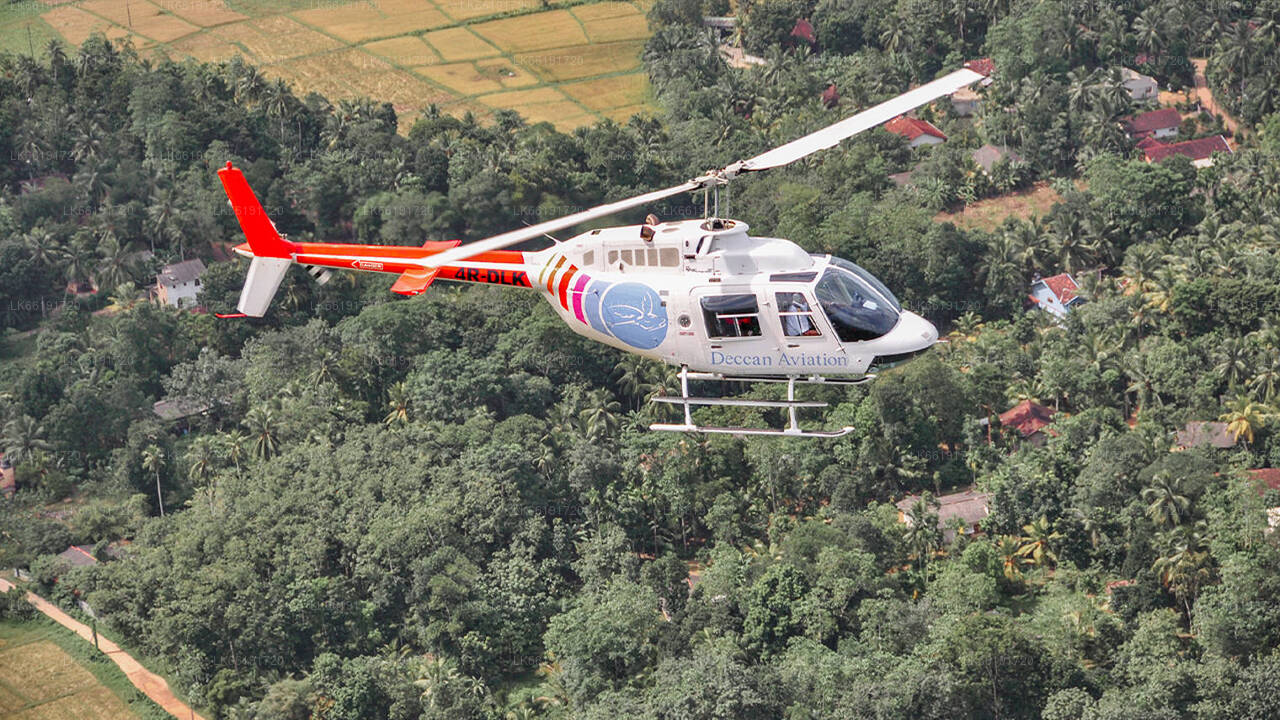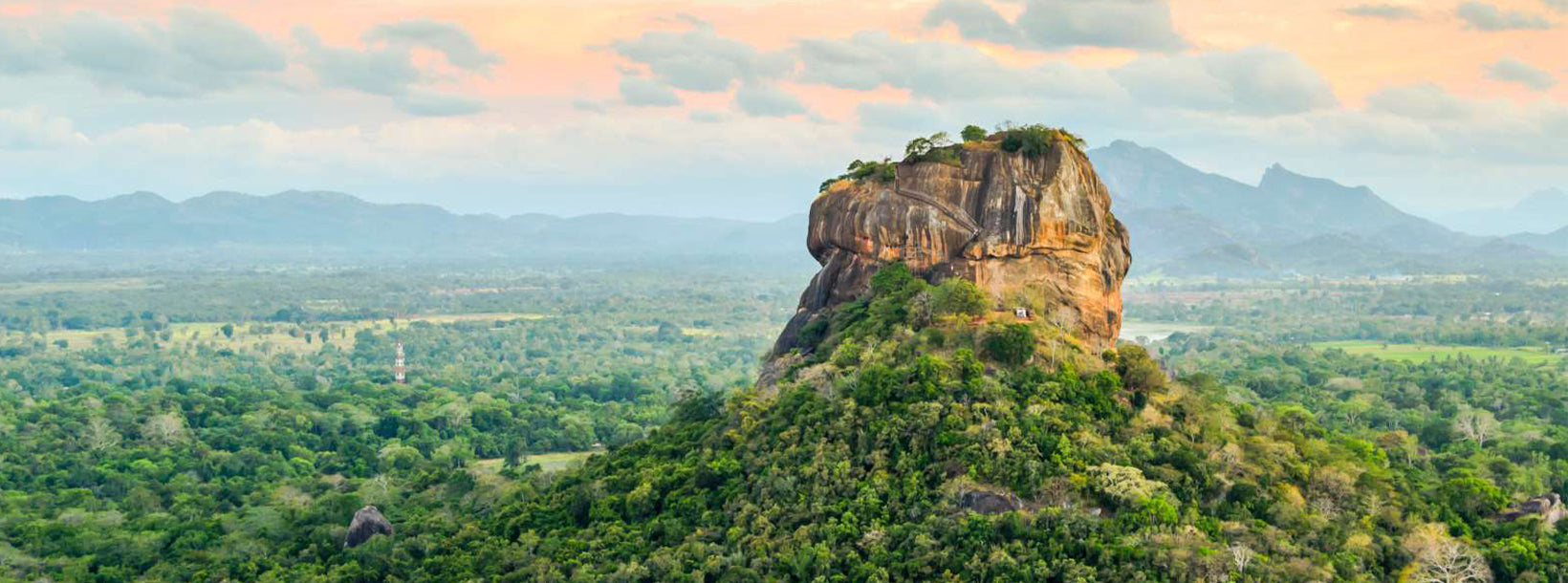
Sigiriya stad
Sigiriya, ett UNESCO-världsarv i Sri Lanka, är en gammal klippfästning och palats med fantastiska fresker och vidsträckta trädgårdar. Den reser sig dramatiskt från slätterna och är ett bevis på öns rika historia och arkitektoniska uppfinningsrikedom. Utforska Sigiriyas förtrollande skönhet och kulturella betydelse.
Sigiriya Frescoes
The Sigiriya Frescoes were painted on the western surface of Sigiriya Rock, located in central Sri Lanka. Painted thirteen hundred years ago, they were the highlight of a massive palace complex built in 480AD by King Kasyapa. Today only a few paintings survive, in a small pocket half-way up the rock, about 100 meters above ground.
Protected in this small, sheltered depression a hundred meters above ground, they float effortlessly among the clouds. Some say they are celestial nymphs carrying flowers to shower upon kings and mortals below. Others suggest that they are queens and concubines of Kasyapa’s harem.
The ladies of the frescoes have been the subject of speculation for nearly one thousand six hundred years. They, in turn, have remained silent, smiling enigmatically, their secret intact for over 1,600 years. The names of the ladies and the artists who painted them are lost to history. Their legacy has survived for over half a million days, a testament to the genius of their creators and the king who commissioned them.
Who are the women in the Sigiriya Frescoes?
The rich adornments, sophisticated clothing, lifelike appearance, vibrant use of color, and the true rendition of facial and anatomical characteristics support the view that the artist drew his inspiration from the ladies of King Kasyapa’s court — his harem. The most telling validation of this view is that they all wear a delicate three-circled tattoo around their necks
The prominent but unobtrusive display of this tattoo, worn with pride, was meant to clearly identify these ladies as belonging to the king. They were ladies of the king’s harem, dressed in their finest. They were to be admired but not touched. For this reason, they were depicted in true form, voluptuous and desirable, but shorn of any earthly sexuality. They were not intended to be titillating. Depicted as supernatural beings they are portrayed with flowers to shower upon humans below. They were intended to evoke a sense of wonderment and to project the opulence and grandeur of Kasyapa the all-powerful god-king.
Om Centralprovinsen
Centralprovinsen i Sri Lanka består huvudsakligen av bergig terräng. Provinsen har en yta på 5 674 km² och en befolkning på 2 421 148. Några större städer inkluderar Kandy, Gampola (24 730), Nuwara Eliya och Bandarawela. Befolkningen är en blandning av singaleser, tamiler och morer. Både bergshuvudstaden Kandy och staden Nuwara Eliya ligger inom Centralprovinsen, liksom Sri Pada. Provinsen producerar mycket av det berömda ceylonteet, som planterades av britterna på 1860-talet efter att en förödande sjukdom dödat alla kaffeplantager i provinsen. Centralprovinsen lockar många turister, med bergsstäder som Kandy, Gampola, Hatton och Nuwara Eliya. Tempeltand eller Dalada maligawa är den viktigaste heliga platsen i Centrelprovinsen. Klimatet är svalt, och många områden på cirka 1500 meters höjd har ofta kyliga nätter. De västra sluttningarna är mycket våta, och vissa platser har nästan 7000 mm regn per år. De östra sluttningarna är delar av den mellantorra zonen eftersom det endast regnar från nordöstra monsunen. Temperaturerna varierar från 24 °C i Kandy till bara 16 °C i Nuwara Eliya, som ligger 1 889 m över havet. De högsta bergen i Sri Lanka ligger i Centralprovinsen. Terrängen är mestadels bergig, med djupa dalar som skär in i den. De två huvudsakliga bergsregionerna är det centrala massivet och Knuckles-bergskedjan öster om Kandy.










